Art and Winter
December has arrived, and with it, so has winter! In fact, in the northern hemisphere, the period between December 21 and 22 coincides with the winter solstice, the day in which, astronomically speaking, begins the coldest season of the year. It is important to highlight how this period has been widely investigated by the work of the greatest masters in the history of art, becoming a cult theme of artistic representation. In fact, painters such as Pieter Bruegel the Elder, Caspar David Friedrich, Oscar-Claude Monet, Gustave Caillebotte, Vincent Willem van Gogh, Edvard Munch and Marc Chagall tried their hand at painting winter landscapes. In addition, there are also many examples of allegorical depictions of this season, which were executed by artists such as, Giorgio Vasari, Bartolomeo Ammannati, Jacopo Robusti, Giuseppe Arcimboldo, and Lorenzo Baldissera Tiepolo.
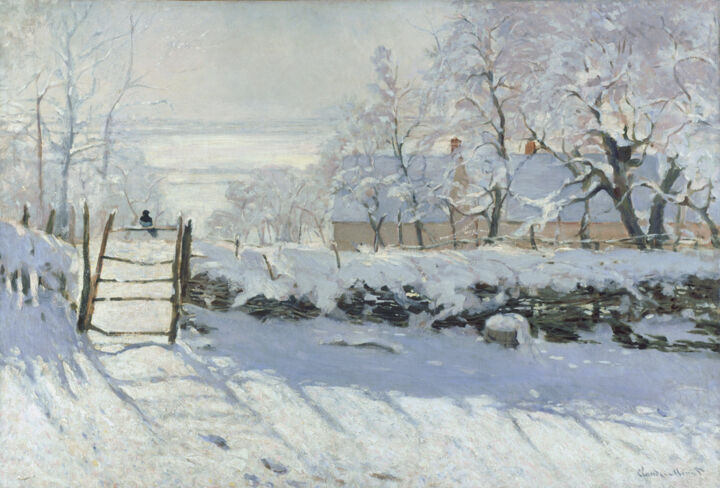 Oscar-Claude Monet, The Magpie, 1868-1869. Oil on canvas, 89×130 cm. Paris: Musée d'Orsay.
Oscar-Claude Monet, The Magpie, 1868-1869. Oil on canvas, 89×130 cm. Paris: Musée d'Orsay.
Marc Chagall, Above Vitebsk, 1914. Oil on canvas, 73 x 93 cm. Toronto: Art Gallery of Ontario.
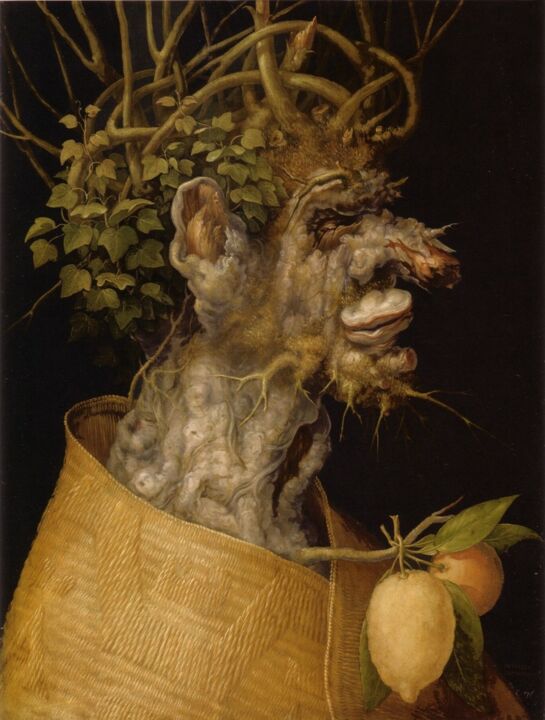 Giuseppe Arcimbolodo, Winter, 1563. Oil on panel, 66 × 50 cm: Paris: Louvre Museum.
Giuseppe Arcimbolodo, Winter, 1563. Oil on panel, 66 × 50 cm: Paris: Louvre Museum.
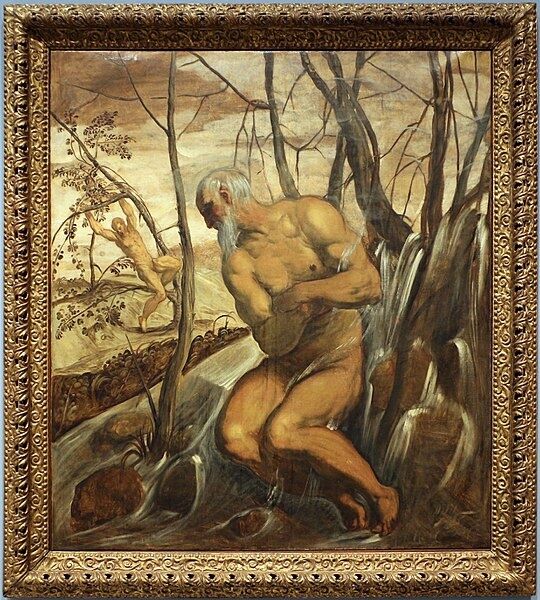 Jacopo Robusti (known as Tintoretto), Allegory of Autumn and Winter, 1575-85. Oil on canvas, 160.66 × 143.51 cm. Pittsburgh: Carnegie Museum of Art.
Jacopo Robusti (known as Tintoretto), Allegory of Autumn and Winter, 1575-85. Oil on canvas, 160.66 × 143.51 cm. Pittsburgh: Carnegie Museum of Art.
Landscape painting
As far as landscape painting is concerned, the first examples in which this genre assert themselves, finding a certain autonomy, date back to the Hellenistic age. During the Middle Ages, however, despite the persistence of Hellenistic motifs, sometimes in Byzantine and Carolingian art, the natural element assumed a purely symbolic and decorative value. Later, during the German Renaissance, landscape painting was once again the object of independent artistic research, marked by a real topographical investigation, aimed at expressing the dramatic forces of nature. In addition, this pictorial genre was also ennobled by Flemish artistic research, in particular by the descriptive landscapes of J. Patinir, by the fantastic ones of H. Bosch and by the glimpses of everyday life of P. Bruegel the Elder. In Italy, the evolution of landscape painting was inextricably linked to a new realistic type of representation, closely linked to the new interest in space and perspective research, which found its greatest examples in the work of L.B. Alberti, Piero della Francesca and Pollaiolo. As far as the scientific observation of the natural datum is concerned, this was undoubtedly brought by the artistic research of Leonardo da Vinci. Finally, despite the work of all these great masters, landscape painting began to be considered in all respects as an autonomous artistic genre only in the 17th century, becoming the subject of countless masterpieces.
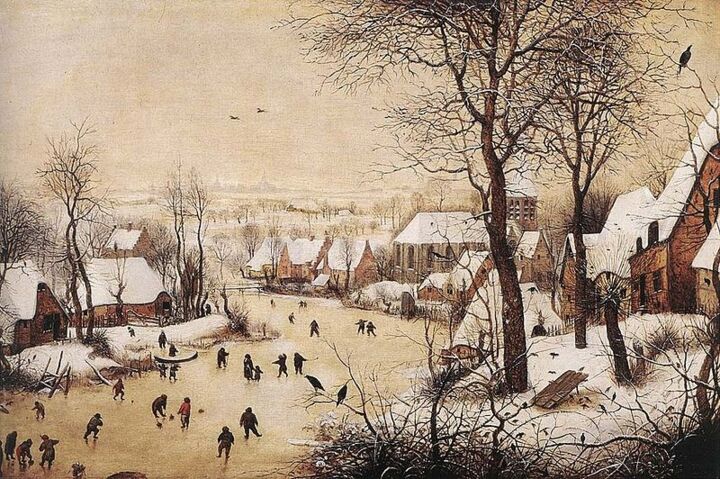 Pieter Bruegel the Elder, Winter landscape with skaters and bird trap, 1565. Oil on panel, 38×56 cm. Brussels: Royal Museum of Fine Arts of Belgium.
Pieter Bruegel the Elder, Winter landscape with skaters and bird trap, 1565. Oil on panel, 38×56 cm. Brussels: Royal Museum of Fine Arts of Belgium.
Pieter Bruegel the Elder: Winter Landscape with Skaters and Bird Trap
Speaking of paintings depicting winter landscapes, a classic of the genre is surely represented by Pieter Bruegel the Elder's work, Winter Landscape with Skaters and Bird Trap. In this painting, the artist has probably depicted the snow-covered village of Pede-Ste-Anne, in Brabant, where the inhabitants, taking advantage of the weather situation, engage in a variety of activities on the ice. The colors of the work, chosen by Bruegel to immortalize this scene of daily life, although few and repetitive, are able to give the painting an atmosphere to say the least suggestive. in addition, the pictorial rendering of the fog, which, created in the background of the panel, has certainly contributed to transform the work into one of the artist's greatest masterpieces. Moreover, of particular effect is also the contrast between the whiteness of the snow and the silhouettes of the trees, the buildings and the characters, which are observed by perching and flying birds. Precisely linked to the presence of the latter, in the foreground of the panel, and more precisely on the right, is painted a large bird trap, around which are present, running a great risk, some volatiles. Therefore, the critics wanted to catch in Bruegel's work also a moralistic intent, in fact, the threat of the bird trap would represent an allegory of salvation, and temptations, that can be encountered in the course of life. The skaters, on the other hand, who continually risk slipping on the ice, would indicate the transience of human existence.
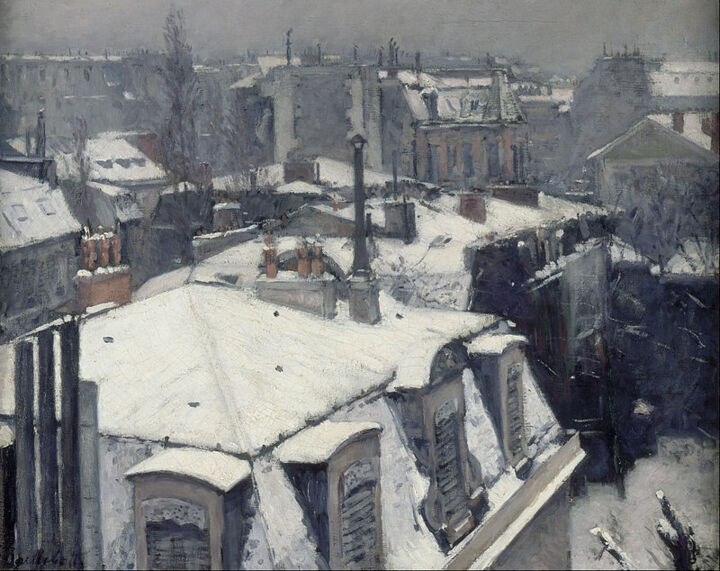 Gustave Caillebotte, View of rooftops, snow effect, 1878. Oil on canvas, 64×82 cm. Paris: Musée d'Orsay.
Gustave Caillebotte, View of rooftops, snow effect, 1878. Oil on canvas, 64×82 cm. Paris: Musée d'Orsay.
Gustave Caillebotte: View of rooftops, snow effect
The production of Gustave Caillebotte, one of the most modern and innovative Impressionists of all time, was marked by the creation of views of the city of Paris from above, of which View of rooftops, snow efect is one of the most famous examples. In this canvas, the artist immortalized the Parisian panorama as he could admire it from his apartment in Montmatre, a characteristic district of the French capital. The modernity of this work lies precisely in the subject, in fact, Caillebotte was the first painter to create views of rooftops. The latter, in View of rooftops, snow effect, have been portrayed during a winter day, characterized by gray clouds, which extinguish the colors of the buildings and contrast with the whiteness of the snow. Finally, this painting, which was presented at the fourth exhibition of the Impressionists in 1879, is capable of powerfully communicating a great feeling of cold, just as if, all of a sudden, we were catapulted to Paris.
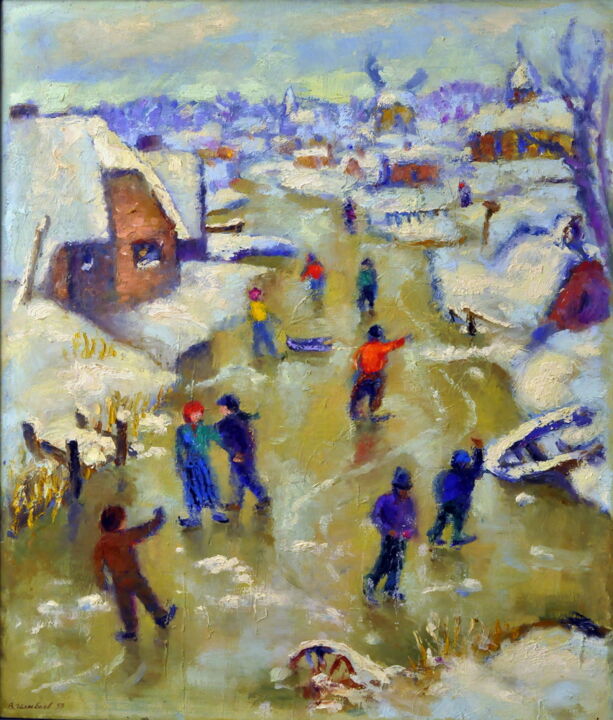 Vladimirs Ilibajevs, Winter in Olland, 1997. Oil on linen canvas, 107 x 91 cm.
Vladimirs Ilibajevs, Winter in Olland, 1997. Oil on linen canvas, 107 x 91 cm.
Vladimirs Ilibajevs: Winter in Olland
Like the great masters of the past, the artists of Artmajeur have depicted winter landscapes, marked by the whiteness of snow. An example of this is the painting by Vladimirs Ilibajevs, which almost seems to be a modern take on Pieter Bruegel the Elder's Winter Landscape with Skaters and Bird Trap. In fact, the Dutch master's masterpiece seems to have been reproposed exclusively in the part, which immortalizes the villagers' ice games. This simplification of the depicted subject, which, however, maintains chromatic tones similar to the original, allows the work to lose its ancient moralistic intent, to approach a more modern and frivolous sensibility, which simply aims to depict the pure fun of winter games.
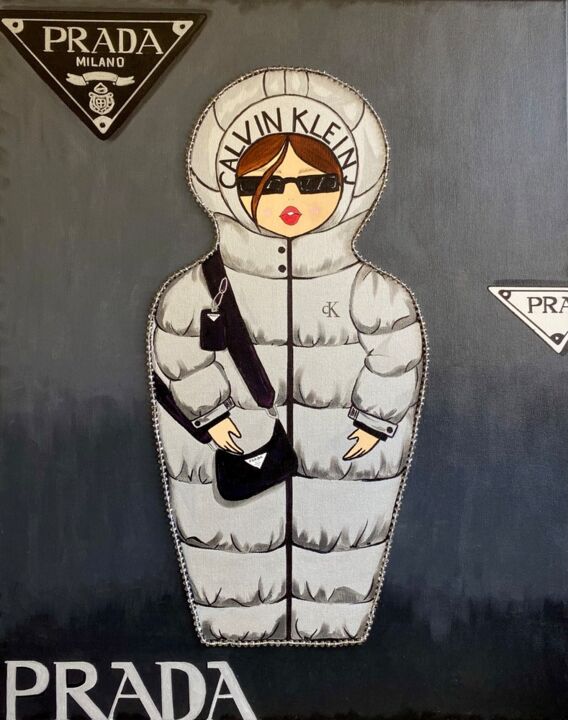 Vera Zvygina, Matryoshka Prada, 2021. Acrylic, marker and embroidery on canvas 100 x 80 cm.
Vera Zvygina, Matryoshka Prada, 2021. Acrylic, marker and embroidery on canvas 100 x 80 cm.
Vera Zvygina: Prada Matryoshka
In innovative work by Zvygina, Artmajeur's artist, the matryoshka, wearing a heavy designer jacket, could perhaps represent a contemporary allegory of winter. Indeed, in the history of art, this season has been richly illustrated through the use of rhetorical figures, which, in most cases, have represented winter in the guise of an old man. A famous example of this is given by Giuseppe Arcimboldo's Four Seasons series, in which winter was depicted as an old, phlegmatic, sullen-looking man, whose frowning face is mainly composed of gnarled tree bark, while a dense tangle of bare branches makes up part of his unusual hair along with some ivy leaves.
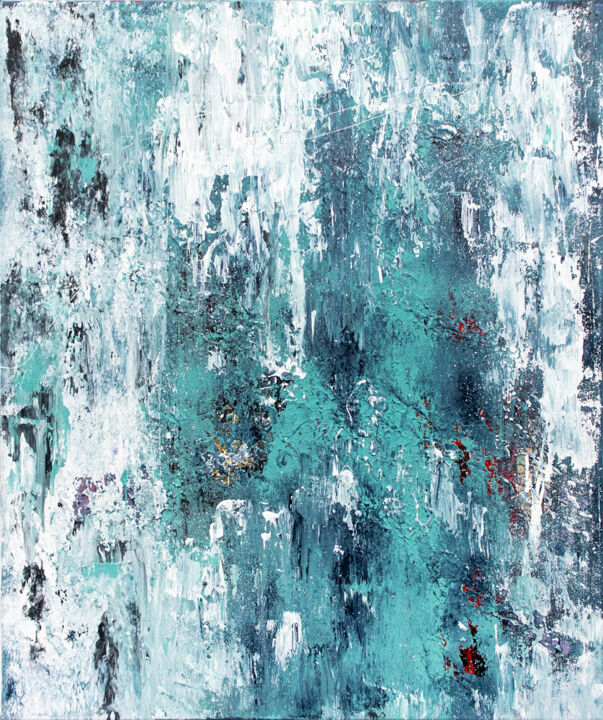 Kristen Jelly, Icy green, 2021. Acrylic on canvas, 60 x 50 cm.
Kristen Jelly, Icy green, 2021. Acrylic on canvas, 60 x 50 cm.
Kristen Jelly: Icy green
The work of the Artist of Artmajeur, Kristen Jelly, is extremely innovative because, despite being abstract, it wants to convey us with concreteness the idea of ice and cold. This end was achieved through the use of cold colors, which stand out on the support as large patches of color. But how is it possible for an abstract painting to connect with reality? Just as Arshile Gorky, exponent of abstract expressionism, said, abstract art allows man to see with his mind what he cannot physically see with his eyes. In conclusion, the evocative power of the colors and gestures of the Artmajeur artist's work allows us to connect to the reality of the winter season, just as if it were a figurative work.


 Olimpia Gaia Martinelli
Olimpia Gaia Martinelli























